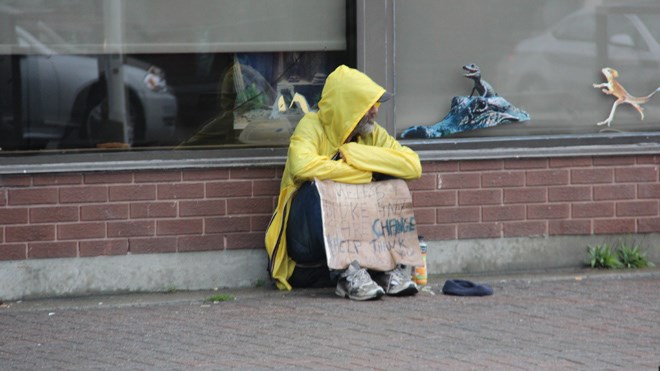While city council’s move for the homeless at finance can be lamented as “what took so long?”, it can also be praised as “better late than never.”
But ignoring the root cause of the problem still remains a black mark on society, best illustrated by an example.
Case 1: A homeless animal (1,000+ annually) is spotted in the downtown.
Animal Control employees or concerned citizens remove the animal to a 24-hour, 365-day animal shelter. A warm location where it is bathed, treated for insect infestation, examined for health conditions, fed and its bodily excrements cleaned away regularly.
State-of-the-art medical analytical equipment and professionals determine and initiate necessary medical needs with surgery or medication. The animal’s mental health is worked on to domesticate it for adoption.
Following days or weeks of care, when the animal is suitable for adoption, strict requirements have to be met by those wishing to adopt. The animal’s life didn’t matter until someone became aware of it. Then, it mattered to the extent that high costs were invested to save its life and ensure a safe future for it.
Case 2: A homeless human (about 180 annually) is spotted in the downtown.
Bright lighting intimidates the homeless to stay in the shadows. Being seen alerts Greater Sudbury Police Service to dispatch officers to ensure the human doesn’t break any laws. One or more human aid program workers arrive with some warm clothing, a bit of food and to determine if the human is mentally sound.
Satisfied that the human has received care, they leave.
Reaction to the pandemic removed access to excrement needs, making on-the-street bodily functions a necessity. Some homeless people were bussed to a 12-hour, seven-day warm shelter from 10 p.m. to 10 a.m. Food, available in the city core, could be taken to the arena for consumption, then back on the street. Volunteers and private citizens generously provide clothing and hygiene supplies. Some hygiene capability was restored at specific hours.
Habitats or tent communities get destroyed for esthetic reasons with no alternative provided. A caring citizen has developed a “doghouse” means of protecting these individuals in the absence of responsible housing being provided.
Will these be allowed or removed for lack of permitting? The human’s life didn’t not matter until it appeared to be a threat. Minimal investment was made to save that life and no effort made to adapt to a future.
This terrible difference between a humane approach to an animal’s life and a human’s life is a sad, sound indication that our society is sinking into one of inhumanity and anarchy.
Disregard for human life is no longer offensive and while expending $100 million on an arena and $120 million on an art gallery/library, our council will only provide funding possible from provincial and federal governments of $375,000 to provide Band-Aid addressing of the problem.
Thomas Price
Greater Sudbury
